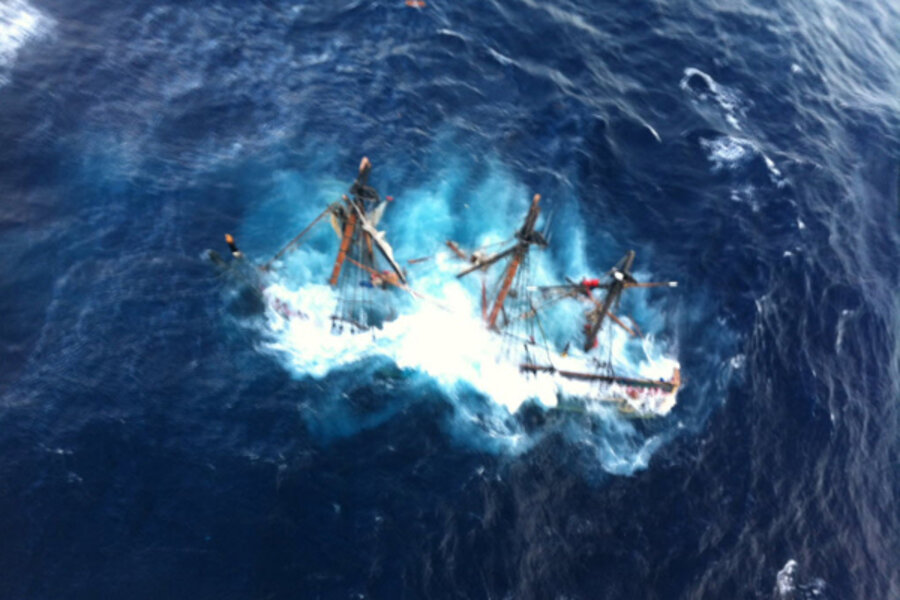Coast Guard scrutiny on the Bounty's sinking begins, investigation expected to last months
Loading...
| ELIZABETH CITY, N.C.
The Coast Guard has ordered a formal investigation into the sinking of a famous tall ship off the coast of North Carolina during Hurricane Sandy.
The review will focus on what caused the sinking of the HMS Bounty off Cape Hatteras, Rear Adm. Steven Ratti said Friday.
One crew member died and the captain is missing after the ship went down Monday. The search for Robin Walbridge, 63, of St. Petersburg, Fla., was suspended. Coast Guard cutters, helicopters and aircraft searched for three days before the effort was stopped around 6:30 p.m. Thursday.
"Suspending a search and rescue case is one of the hardest decisions we have to make," said Capt. Doug Cameron, the chief of incident response for the Coast Guard 5th District.
The search lasted three days despite rough seas in hopes the healthy, expert seaman could stay alive in his survival suit in the relatively warm waters near the site of the shipwreck, the Coast Guard said.
Claudene Christian, 42, died after she and the other 14 crew members evacuated the ship in two life boats.
An investigating officer will receive evidence and testimony using formal rules and procedures.
The investigation will consider whether any failure of equipment or personnel contributed to the crew member's death. It will also determine if further investigation is needed. The investigation is expected to take several months.
The three-masted sailing ship was originally built for the 1962 film "Mutiny on the Bounty" starring Marlon Brando, and it was featured in several other films over the years, including one of the "Pirates of the Caribbean" movies.
The ship's connection to its namesake went back to the original Bounty, whose crew famously took over the ship from its commander, Lt. William Bligh, in April 1789. The mutiny was led by Fletcher Christian, and Claudene Christian said she was his great-great-great-great-great granddaughter.
Walbridge believed he could navigate the ship around Hurricane Sandy when the Bounty set sail last week from Connecticut. After two days in rough seas, he realized his journey would be far more difficult.
"I think we are going to be into this for several days," Walbridge said in a message posted Sunday on the vessel's Facebook page.







